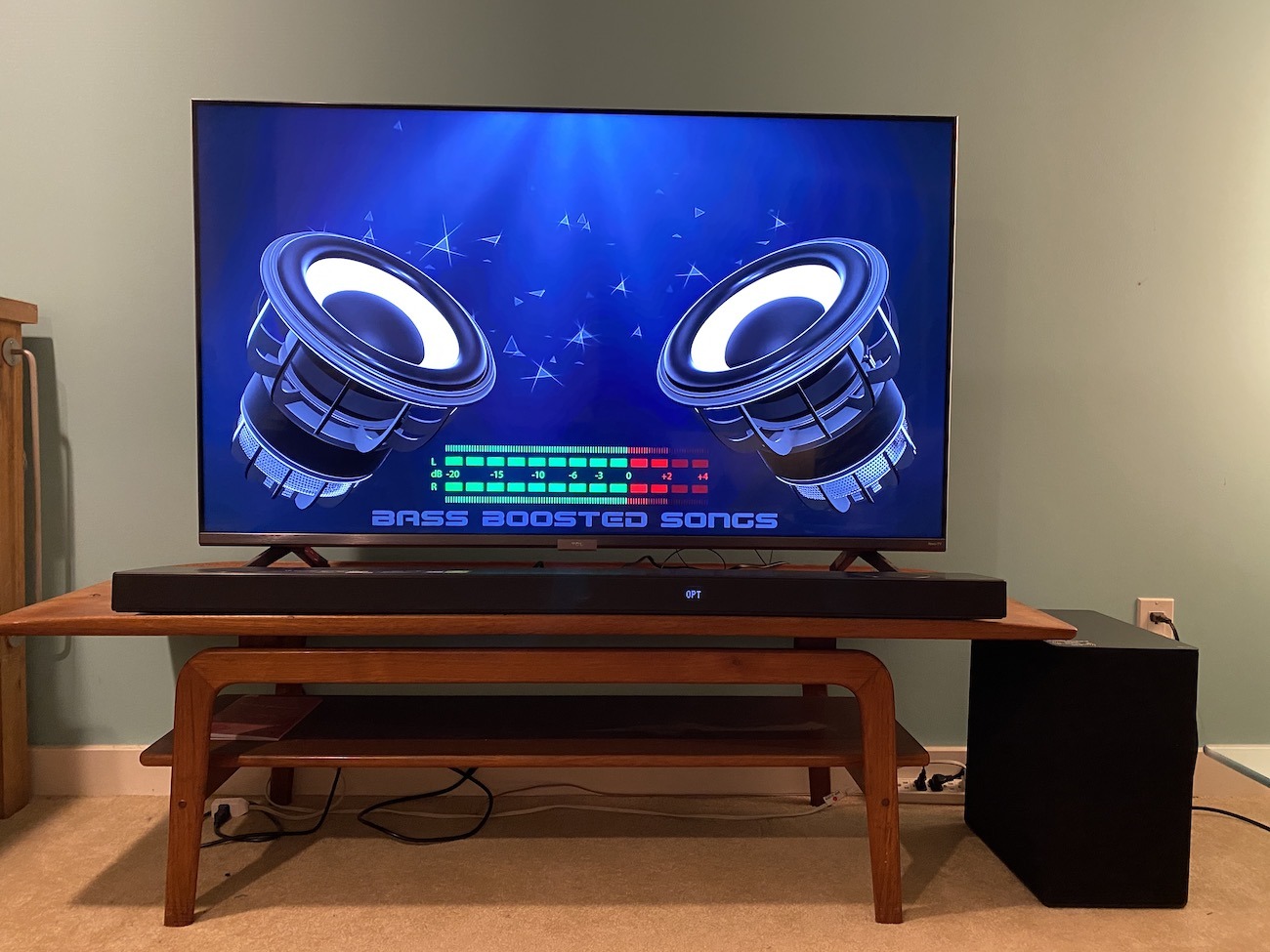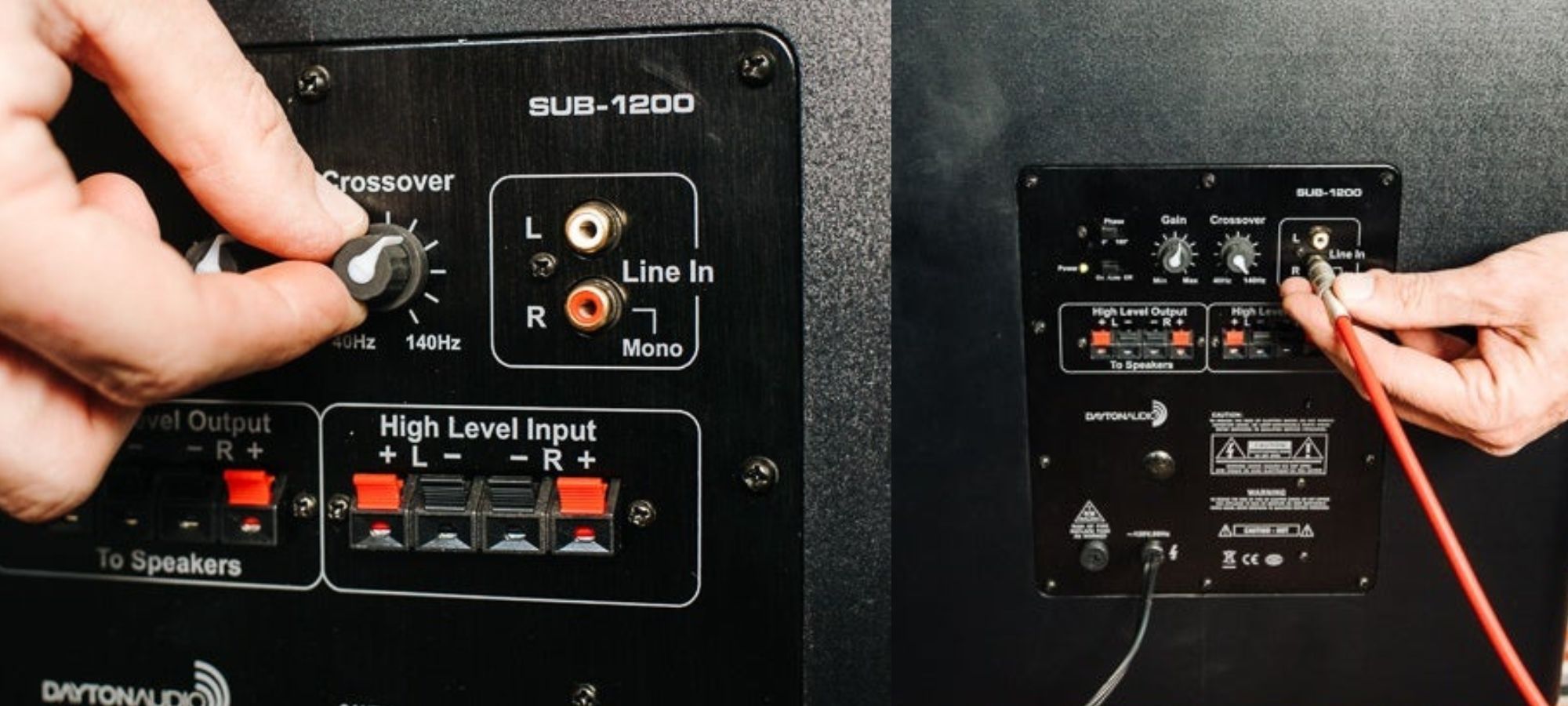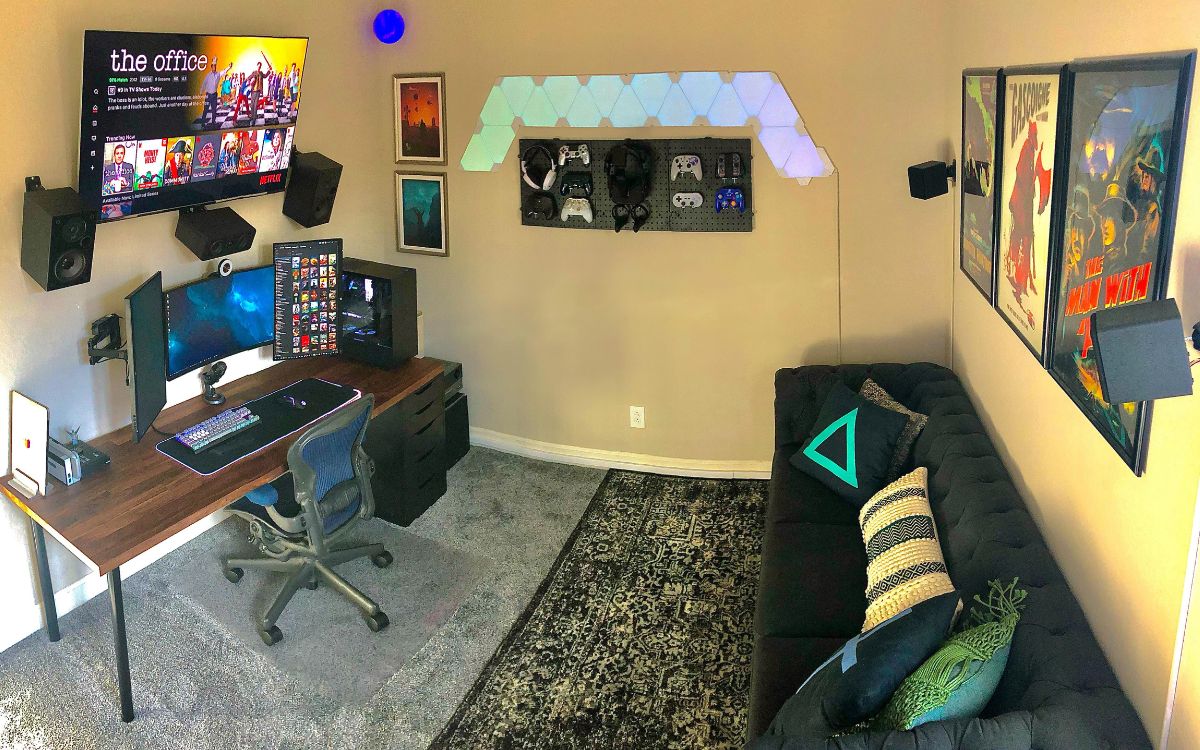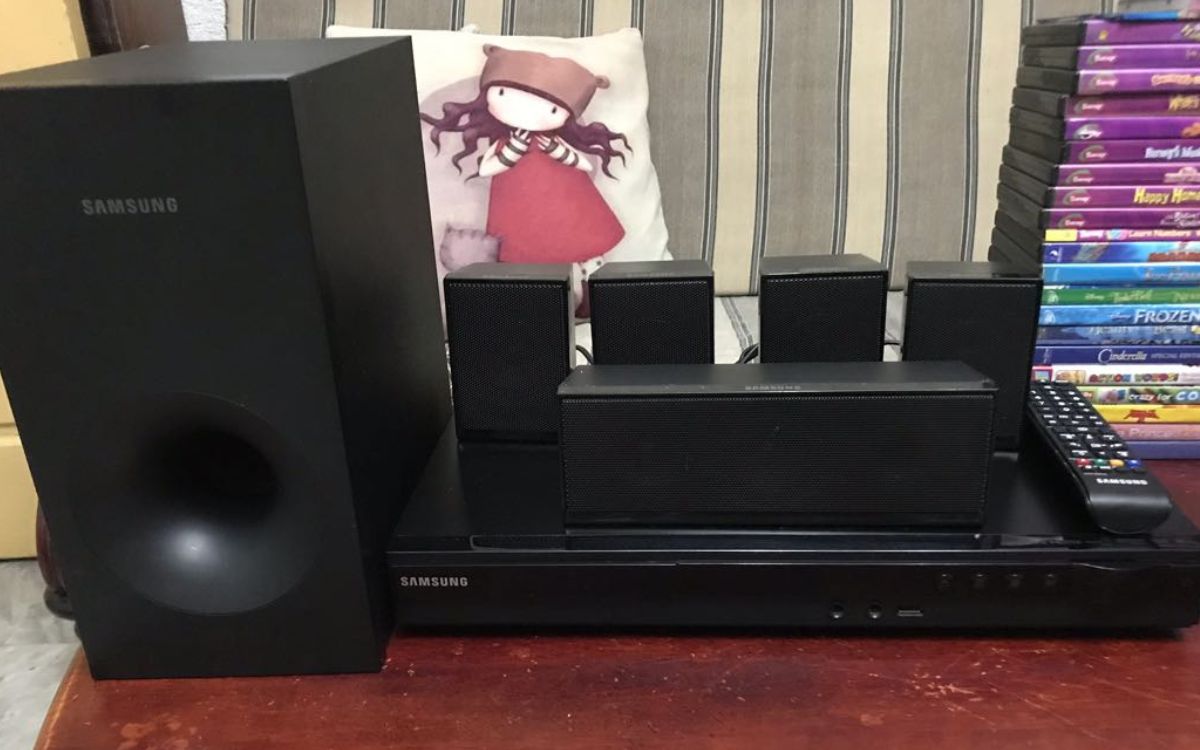Home>Production & Technology>Surround Sound>How To Set Up A Universal Remote To A Surround Sound
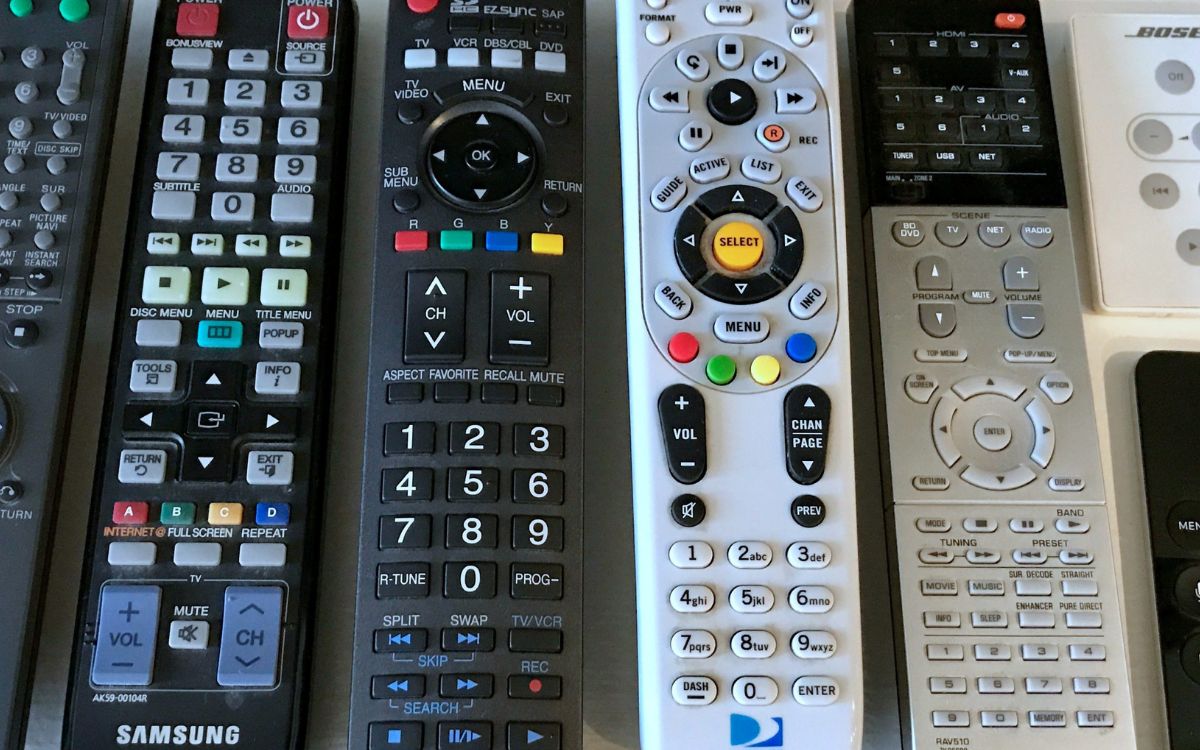

Surround Sound
How To Set Up A Universal Remote To A Surround Sound
Modified: January 22, 2024
Learn how to easily set up a universal remote to your surround sound system and enjoy a seamless audio experience. Master the art of controlling your surround sound with just one device.
(Many of the links in this article redirect to a specific reviewed product. Your purchase of these products through affiliate links helps to generate commission for AudioLover.com, at no extra cost. Learn more)
Table of Contents
- Introduction
- Step 1: Gather the necessary equipment
- Step 2: Identify the brand and model of your surround sound system
- Step 3: Prepare the universal remote for programming
- Step 4: Find the programming code for your surround sound system
- Step 5: Program the universal remote with the programming code
- Step 6: Test the universal remote to control your surround sound system
- Conclusion
Introduction
Welcome to the world of immersive audio with surround sound! If you’re a movie enthusiast or a music lover, you know the importance of having a high-quality sound system that can truly bring your entertainment to life. Surround sound systems are designed to provide a multi-dimensional audio experience, making you feel like you’re right in the middle of the action.
One of the challenges of setting up a surround sound system is dealing with multiple remote controls. It can be frustrating and time-consuming to juggle between remotes to control different components of your entertainment system. That’s where a universal remote comes in handy. A universal remote allows you to control various devices, including your surround sound system, with just one remote.
In this guide, we will walk you through the step-by-step process of setting up a universal remote to control your surround sound system. Whether you’re a tech-savvy individual or a beginner in the world of audio systems, this guide will help you simplify your home entertainment setup and enjoy the convenience of a single remote control.
We will cover everything from gathering the necessary equipment to programming the remote and testing it with your surround sound system. By the end of this guide, you’ll be able to seamlessly control your surround sound system without the hassle of multiple remotes.
Step 1: Gather the necessary equipment
Before you begin setting up your universal remote with your surround sound system, make sure you have all the necessary equipment. Here’s what you’ll need:
- A universal remote control: Look for a universal remote that is compatible with your surround sound system. Make sure it has the necessary features to control the audio functions and settings.
- Batteries: Check what type of batteries your universal remote requires and make sure you have them on hand. It’s always a good idea to have spare batteries as well.
- Owner’s manual: Locate the owner’s manual for your universal remote. It will provide detailed instructions on how to program and set up the remote.
- Surround sound system components: Ensure that all the components of your surround sound system, such as the receiver, speakers, and subwoofer, are properly connected and powered on.
- Clear line of sight: Position your universal remote in a way that it has a clear line of sight to your surround sound system. This will ensure that the signals are transmitted without any obstruction.
Gathering all the necessary equipment beforehand will streamline the setup process and save you from any last-minute delays or frustrations. Once you have everything you need, you’re ready to move on to the next step.
Step 2: Identify the brand and model of your surround sound system
Before programming your universal remote, it’s important to identify the brand and model of your surround sound system. This information is crucial as it will help you find the correct programming code for your specific system.
To find the brand and model of your surround sound system, you can check the user manual or look for labels or markings on the components themselves. The brand and model information is usually displayed prominently on the front or back of the receiver or speakers.
If you’re unable to locate the brand and model information visually, you can refer to the original purchase receipt or any documentation you received when you bought your surround sound system.
Once you have identified the brand and model, make a note of it as you will need this information in the following steps of programming your universal remote.
Additionally, you can also use the brand and model information to search online for any specific instructions or troubleshooting tips related to your surround sound system. This can be helpful if you encounter any issues during the setup process.
Identifying the brand and model of your surround sound system is an essential step in programming a universal remote. It ensures that you have accurate information to proceed with programming and minimizes any compatibility issues that may arise. With this information in hand, you’re ready to move on to the next step of preparing your universal remote for programming.
Step 3: Prepare the universal remote for programming
Now that you have identified the brand and model of your surround sound system, it’s time to prepare your universal remote for programming. Follow these steps to get started:
- Insert batteries: Open the battery compartment on your universal remote and insert the required batteries. Make sure to match the polarity (+/-) correctly.
- Power on the remote: Press the power button on the remote to turn it on. Some remotes may have a dedicated power button, while others may require you to press a combination of buttons.
- Choose the audio mode: Most universal remotes have different modes for controlling different devices. Look for the mode switch or buttons on the remote and select the audio mode. This will enable the remote to control your surround sound system.
- Enter programming mode: Consult the owner’s manual of your universal remote to find the specific instructions for entering programming mode. This usually involves pressing a combination of buttons or entering a code. Follow the instructions carefully to ensure you’re in the programming mode.
Once your universal remote is powered on and in programming mode, it’s ready to receive the programming code for your surround sound system. In the next step, we’ll find the programming code so you can set up the remote to control your surround sound system seamlessly.
Preparing your universal remote for programming is an important pre-requisite to ensure a successful setup. Take your time to go through each step carefully, following the instructions provided by your universal remote’s manufacturer. Once you’re ready, move on to step 4 to find the programming code for your specific surround sound system.
Step 4: Find the programming code for your surround sound system
Now that your universal remote is prepared for programming, it’s time to find the correct programming code for your surround sound system. The programming code is a unique combination of numbers that allows the universal remote to communicate with your specific brand and model of surround sound system.
There are a few ways you can find the programming code:
- Manufacturer’s website: Visit the website of your universal remote’s manufacturer and look for a list of programming codes. Most manufacturers provide a searchable database where you can enter the brand and model of your surround sound system to find the appropriate code. Note down the code once you find it.
- Universal remote’s user manual: Check the user manual that came with your universal remote. Many user manuals include a list of programming codes for various brands and models of audio devices. Look for the section related to programming codes and find the code that corresponds to your surround sound system.
- Online resources: If you can’t find the programming code from the manufacturer’s website or user manual, you can also search online forums or websites dedicated to remote programming. These resources often have user-contributed code lists, and you may find the code you need by searching for your specific brand and model.
Once you have located the programming code, make a note of it as you will need it for the next step of programming the universal remote.
Keep in mind that not all programming codes will work for every surround sound system. If you’re unable to find the correct programming code, you may need to try different codes or consult the manufacturer’s support for further assistance.
Finding the programming code for your surround sound system is a crucial step in successfully setting up your universal remote. Take your time to ensure you have the correct code, as an incorrect code may prevent the remote from controlling your surround sound system properly. With the programming code in hand, you’re ready to move on to step 5.
Step 5: Program the universal remote with the programming code
With the programming code for your surround sound system in hand, you’re now ready to program your universal remote. Follow these steps to program the remote:
- Enter programming mode: If you’re not already in programming mode, refer to your universal remote’s owner’s manual to enter the programming mode. This step may involve pressing a specific combination of buttons or entering a code.
- Input the programming code: Once in programming mode, enter the programming code for your specific surround sound system. Refer to your universal remote’s user manual for the specific instructions on how to input the code. Follow the instructions carefully, as entering the code incorrectly may result in an unsuccessful programming.
- Confirm the programming: After entering the programming code, press a confirmation button or follow the instructions in your user manual to confirm the programming. This step varies depending on the brand and model of your universal remote.
- Exit programming mode: Once the programming is confirmed, exit the programming mode on your universal remote. Again, refer to your user manual for the specific steps to exit programming mode.
Once you have completed these steps, your universal remote should now be programmed to control your surround sound system. Make sure to test out the various functions and buttons on the remote to ensure that it’s working properly.
If the remote is not controlling your surround sound system as expected, double-check that you entered the correct programming code. If the issue persists, try reprogramming the remote using a different programming code or consult the manufacturer’s support for further assistance.
Programming the universal remote with the correct programming code is essential to ensure proper functionality and control over your surround sound system. Take your time and follow the instructions provided by your universal remote’s manufacturer to successfully program the remote. Now, it’s time to move on to the final step of testing the universal remote.
Step 6: Test the universal remote to control your surround sound system
Now that you have programmed your universal remote with the programming code for your surround sound system, it’s time to test if the remote can effectively control your audio setup. Follow these steps to test the remote:
- Ensure proper positioning: Make sure that the universal remote has a clear line of sight to your surround sound system and that there are no obstructions in between.
- Turn on the surround sound system: Use the universal remote to turn on your surround sound system. Press the power button or the corresponding button for power on/off.
- Adjust volume: Use the volume buttons on the universal remote to increase or decrease the volume of your surround sound system. Verify that the volume control is responsive and adjusts the audio level accordingly.
- Test other functions: Test out other key functions of your surround sound system using the universal remote. This may include switching between audio modes, adjusting bass and treble levels, or selecting different sources. Ensure that each function works as intended with the universal remote.
- Test additional devices: If your surround sound system is connected to other devices like a Blu-ray player or a gaming console, test the control of those devices using the universal remote as well. Ensure that you can navigate menus, play/pause, and control the functions of connected devices.
- Make adjustments if necessary: If you encounter any issues or functions are not working as expected, double-check the programming code and reprogram the universal remote if needed. Refer to your universal remote’s user manual for troubleshooting steps or contact the manufacturer’s support for assistance.
By thoroughly testing the universal remote, you can ensure that it is working properly and controlling your surround sound system as desired. Troubleshoot any issues that arise during the testing process to achieve seamless control of your audio setup.
Once you are satisfied with the performance of the universal remote in controlling your surround sound system, you can now sit back, relax, and enjoy the immersive audio experience that surround sound provides.
Congratulations! You have successfully set up and programmed your universal remote to control your surround sound system. Say goodbye to the hassle of multiple remotes and enjoy the convenience of one remote to rule them all.
Conclusion
Setting up a universal remote to control your surround sound system can greatly simplify your home entertainment experience. By following the step-by-step process outlined in this guide, you can consolidate multiple remotes into one convenient device, providing seamless control over your audio setup.
We started by emphasizing the importance of gathering the necessary equipment, including a compatible universal remote, batteries, and the owner’s manual. Having everything prepared ensures a smooth setup process.
Next, we highlighted the significance of identifying the brand and model of your surround sound system. This information is crucial for finding the correct programming code that allows the universal remote to communicate with your specific audio setup.
We then guided you through preparing the universal remote for programming by inserting batteries, powering it on, selecting the audio mode, and entering programming mode. These steps ensure that the remote is ready to receive the programming code.
After that, we discussed the process of finding the programming code. Whether through the manufacturer’s website, user manual, or online resources, locating the correct code is essential for successful programming.
Once armed with the programming code, we explained how to program the universal remote by entering the code, confirming the programming, and exiting programming mode. Following these instructions will ensure that your remote is properly synced with your surround sound system.
Lastly, we emphasized the importance of testing the universal remote to control your surround sound system’s various functions. By testing volume control, adjusting settings, and experimenting with additional devices, you can ensure that the remote is functioning as expected.
In conclusion, setting up a universal remote for your surround sound system allows for a more streamlined and enjoyable entertainment experience. By consolidating control into a single device, you can focus on immersing yourself in the captivating world of surround sound without the inconvenience of multiple remotes. So grab your universal remote and embark on a journey to elevate your audio experience to new heights!


